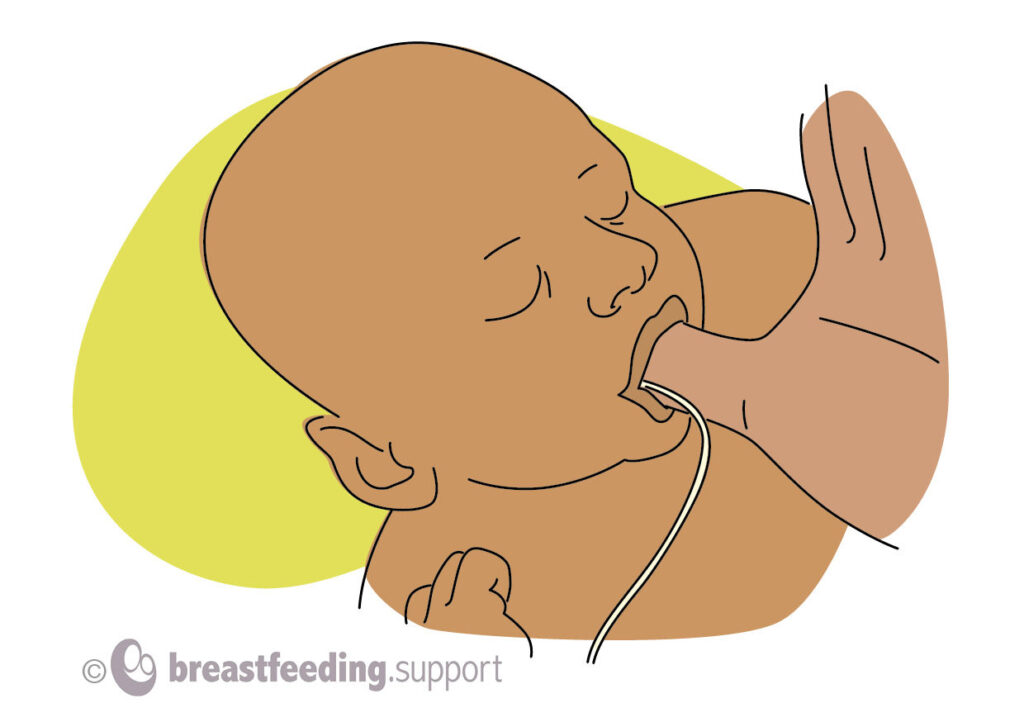
Breastfeeding is a precious and intimate way to nourish and bond with your newborn. However, when it comes to latching on properly, some babies have difficulty, which can frustrate both mother and baby. While breastfeeding is the highly recommended method, it is comforting to know that there are alternate feeding techniques available to ensure that your baby gets the nourishment and care he or she needs. In this article, we will take a closer look at the different alternatives to breastfeeding and their benefits when newborns find it difficult to latch on.
Alternative Methods to Breastfeeding
Expressing Breast Milk
For newborns and infants who are having difficulty latching on, using breast pumps to express breast milk is a lifeline to mothers. This involves using a gentle pump to extract milk from the mother after which, it is fed to the baby through a bottle or other feeding device. This method has various advantages because it ensures that the baby receives the most important nutrients and antibodies found in breast milk while compensating for the need for direct latching. This option provides a sense of flexibility by allowing other caregivers to participate in feeding and nurturing your little one. It is like bottling up your love and nourishment and delivering it in a way that suits both you and your baby.
However, when choosing a breast pump, it is important to select one that fits your needs and comfort level. You can select between manual and electric pumps, each with its own set of advantages. It is also highly important to handle, and store expressed breast milk properly and carefully, to maintain its nutritional value and reduce any risk of contamination.
Bottle-Feeding
Bottle-feeding with formula milk is also a common alternative to breastfeeding for newborns who find it difficult to latch. Formula milk is specifically designed to provide infants with all the essential nutrients that promote healthy growth and development. Bottle feeding provides ease and flexibility by allowing other caregivers to step in and assist with feeding duties. It also gives a precise measurement of the amount of milk consumed by the little one, ensuring that they receive adequate nutrition.
When opting for bottle-feeding, it’s important to select the appropriate nipple size and shape that imitate breastfeeding and thereby, giving your baby a sense of familiarity. Slow-flow nipples are often prescribed for newborns, as they minimise overfeeding and mimic the natural flow of breast milk. Furthermore, it is critical to prepare and manage formula milk according to the manufacturer’s recommendations to ensure that your child receives safe and adequate nutrition.
Cup Feeding
Cup feeding is a gentle and caring alternative for newborns who have challenges in latching. This technique involves pouring expressed breast milk or formula milk into a small cup and allowing the baby to sip from it. Cup feeding is a wonderful bonding experience since it allows your child to sip from a vessel that cradles their little mouth. It reduces the need for bottles or nipples, offering a more natural approach to feeding during those early stages.
Cup feeding may require some practice and monitoring at first as both you and your baby become acquainted with the technique. It is important to use a clean, sterilised cup with smooth sides to ensure your baby’s safety and comfort. Gradually, with patience and practice, cup feeding can become a cherished feeding method, fostering a unique connection between you and your little one.
Finger Feeding

is an intimate feeding technique used by mothers to feed newborns who are struggling to latch. It involves using a clean finger or a finger-feeding device to deliver milk to the baby’s mouth. This method allows your baby to suckle and eat while having a more natural oral feeling, similar to breastfeeding. It’s as if your finger becomes an extension of yourself and a channel for nourishment and love.
Finger feeding can be particularly beneficial when your infant needs to practise sucking and latching abilities. It allows them to explore and synchronise their reflexes, which will ultimately make the transition to breastfeeding easier. This gentle technique encourages your baby’s instincts while allowing you to play an active role in their nourishment.
Supplementary Nursing System (SNS)
The Supplementary Nursing System (SNS) is like a nurturing bridge that combines both breastfeeding and bottle-feeding. It consists of a container filled with breast milk or formula milk, connected to a thin tube that is placed near your nipple. As your infant latches onto your breast, additional milk is delivered through the tube placed on your breasts. It is a harmonious combination of closeness and nourishment, ensuring that your child benefits from both the breast and the bottle.
The SNS has several benefits, including keeping your infant interested in nursing, boosting milk production, and delivering additional nourishment during breastfeeding sessions. It can be of great help to babies who have trouble latching or gaining weight. However, using an SNS requires guidance and support from a lactation consultant or healthcare professional to ensure proper placement and usage. They can be your guiding light, helping you navigate this beautiful, but intricate feeding method.
Seeking Support
When faced with challenges in breastfeeding, it’s crucial to remember that you are not alone. Seeking support from professionals can make a difference. A lactation consultant, midwife, or paediatrician who specializes in breastfeeding can offer vital advice and support suited to your specific situation. They can evaluate your baby’s latch, give advice on positioning and bonding, help you express breast milk, and address any concerns or issues you may have. They are there to be your guiding compass, helping you find the most suitable alternative feeding method for your newborn.

Breastfeeding is a wonderful journey of love and nourishment, but it is not without difficulties. If your newborn is having trouble latching on, keep in mind that there are different feeding options available. Expressing breast milk, bottle-feeding with formula, cup feeding, finger feeding, and utilizing supplementary nursing systems are all options that can provide your little one with the essential nutrition they need.
Each alternative feeding approach has its own set of advantages and disadvantages, and it is critical to choose a method that works best for you and your baby. Remember to seek professional support and guidance from lactation consultants or healthcare professionals who specialize in breastfeeding. They will be there to help you along the way, providing personalised advice and navigating the path to finding the best feeding technique for your little one.
Embrace the warmth and love that flows through every feeding session and treasure these priceless moments with your newborn!!!
